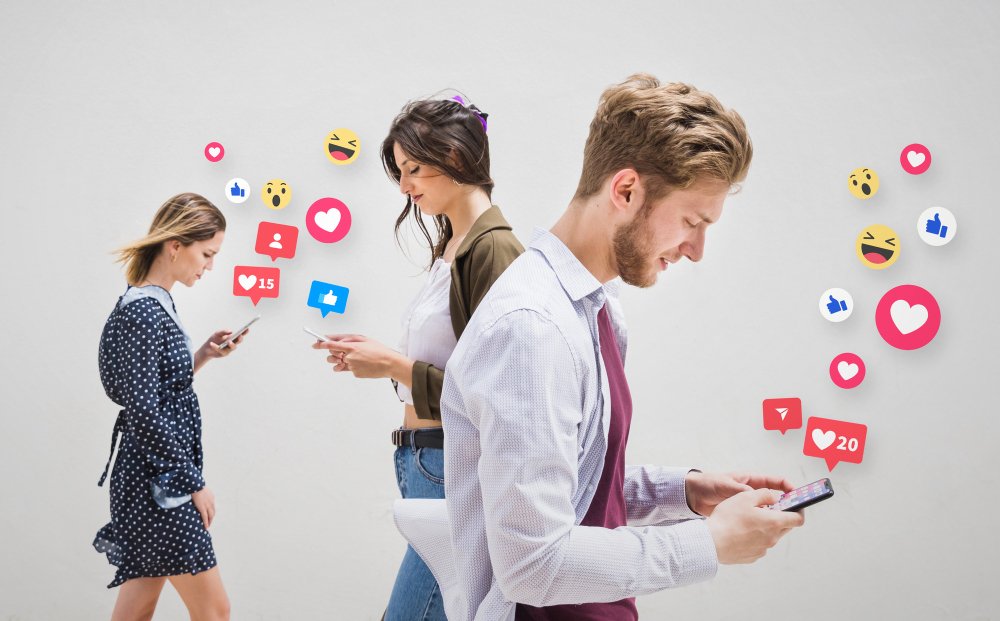In the digital age, social media has become an integral part of our daily routines, reshaping how we communicate, build relationships, and perceive the world around us. Platforms like Facebook, Instagram, Twitter, and TikTok have transformed interactions, offering instant connectivity and a platform for self-expression. However, this shift has brought about significant changes in our social dynamics, mental health, and communication patterns. This article explores the multifaceted impact of social media on our daily interactions, highlighting both the benefits and challenges it presents.
A. The Transformation of Communication
1. Instant Connectivity
Social media enables real-time communication, allowing individuals to connect across vast distances instantly. This immediacy has bridged geographical gaps, fostering relationships that might have otherwise dwindled due to distance.
2. Altered Communication Styles
The rise of social media has introduced new communication norms. Emojis, GIFs, and abbreviations have become commonplace, often replacing traditional language structures. While these tools can enhance expression, they may also lead to misunderstandings due to lack of context.
3. Reduced Face-to-Face Interactions
As online communication becomes more prevalent, in-person interactions have declined. Studies indicate that excessive social media use can lead to decreased social skills and a preference for digital over physical interactions.
B. Impact on Relationships
1. Strengthening Connections
Social media offers a platform to maintain and strengthen relationships. Sharing life updates, photos, and messages helps individuals stay connected with friends and family, regardless of physical distance.
2. Challenges in Romantic Relationships
While social media can enhance connections, it can also introduce challenges in romantic relationships. Issues such as jealousy, miscommunication, and unrealistic comparisons can arise, potentially leading to conflicts .
3. Formation of Parasocial Relationships
The digital age has seen a rise in parasocial relationships—one-sided connections where individuals feel closely linked to influencers or celebrities who are unaware of their existence. These relationships can impact self-esteem and social expectations .
C. Mental Health Implications
1. Anxiety and Depression
Excessive social media use has been linked to increased levels of anxiety and depression. The constant exposure to curated content can lead to feelings of inadequacy and low self-worth.
2. Fear of Missing Out (FOMO)
Social media platforms often showcase highlights of others’ lives, leading to FOMO. This fear can result in compulsive checking of social media, disrupting daily activities and sleep patterns.
3. Sleep Disruption
The blue light emitted by screens and the engaging nature of social media can interfere with sleep. Late-night scrolling is associated with reduced sleep quality and duration .
D. Influence on Self-Perception
1. Curated Identities
Users often present idealized versions of themselves on social media, leading to a disparity between online personas and real-life identities. This curation can affect self-esteem and authenticity.
2. Comparison Culture
The tendency to compare oneself to others on social media can lead to negative self-assessment. Seeing peers’ achievements and lifestyles may foster feelings of inadequacy.
3. Validation Seeking
The pursuit of likes and positive feedback can become addictive. This validation-seeking behavior may influence content shared and impact mental well-being.
E. Effects on Social Skills
1. Decreased Empathy
Reduced face-to-face interactions can hinder the development of empathy. Non-verbal cues, essential for understanding emotions, are often absent in digital communication.
2. Shortened Attention Spans
The rapid pace of social media content consumption may contribute to decreased attention spans, affecting the ability to engage in prolonged conversations.
3. Communication Anxiety
Reliance on digital communication can lead to anxiety in real-life social situations, as individuals may feel less confident in their interpersonal skills.
F. Societal and Cultural Impacts
1. Spread of Misinformation
Social media platforms can facilitate the rapid spread of misinformation, impacting public opinion and behavior. The viral nature of content can amplify false narratives.
2. Political Polarization
Algorithm-driven content can create echo chambers, reinforcing existing beliefs and contributing to political polarization.
3. Cultural Shifts
Social media influences cultural trends, from fashion to language. It serves as a platform for cultural exchange but can also lead to cultural appropriation and homogenization.
G. Strategies for Healthy Social Media Use
1. Setting Boundaries
Establishing time limits for social media use can prevent overconsumption and promote balance.
2. Mindful Engagement
Being conscious of the content consumed and its impact on emotions can foster healthier interactions with social media.
3. Digital Detox
Periodic breaks from social media can improve mental health and encourage real-life connections WIRED.
Conclusion
Social media has undeniably transformed our daily interactions, offering both opportunities and challenges. While it facilitates connection and self-expression, it also poses risks to mental health, relationships, and communication skills














